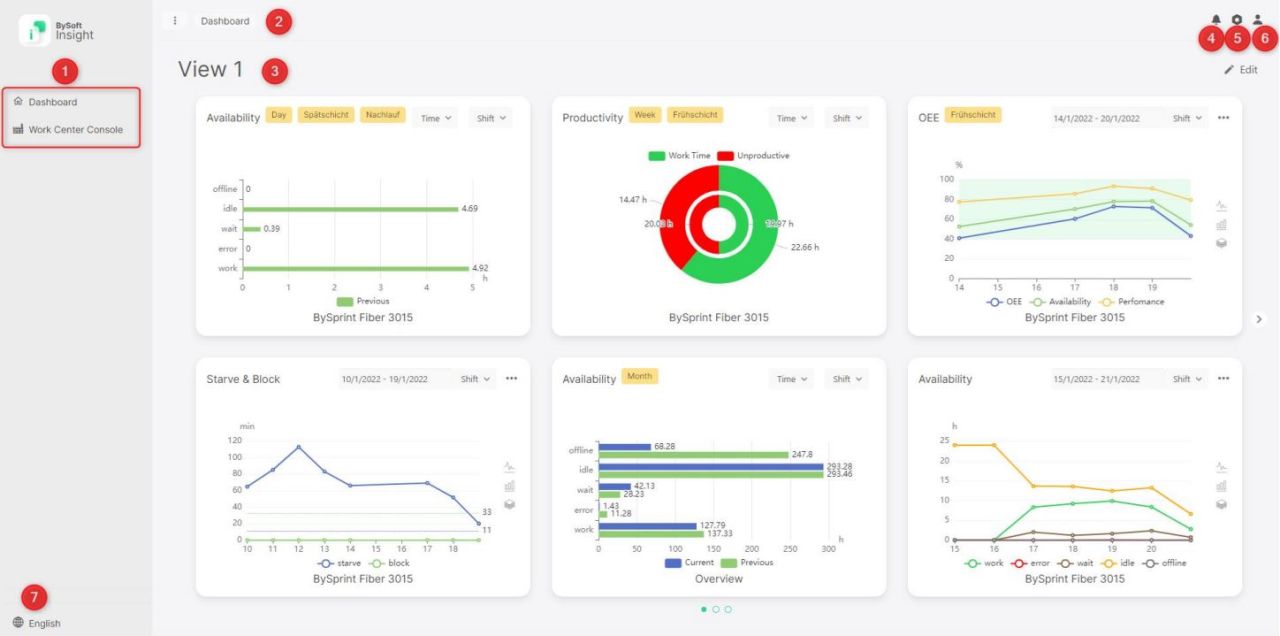
Blog Objective Decisions with Machine Data
Analyzing The Real Costs
If you run equipment, how do you measure the true effectiveness of that equipment? While some might say “Well, it’s paid for and it gets the job done,” that may not be enough to continue to operate the equipment unless you’re putting measures in place to realize the true effectiveness of the equipment. If you truly want an objective measure of the effectiveness of a machine, measures have to be put in place.
- How does the machine perform against expected processing times?
- How often is the machine down for maintenance or repairs or unplanned downtimes?
- How much production time is being lost due to a lack of material automation?
- What is the cost of lost revenue due to a non-competitive bid?
How well is the machine performing against expected processing times? After all, there must exist a benchmark time from the original job quote, right? While the older equipment still runs, perhaps it no longer runs as fast as it used to, and there’s degradation in performance and lost profits due to the job taking longer than expected. What about the quality of the parts? Is the quality of the parts up to today’s quality standards?
If your competitor can deliver better-looking parts, less expensively and with faster delivery, this becomes a risk to your business and also the potential loss of a customer. The way to avert this is to establish measures or “proactive triggers.” Basically, objective decision-making is based on facts, thus eliminating subjective analysis. Regardless of the age of the machine, these measures can be accomplished either by manual analysis or by smart manufacturing applications. One of these measures is called OEE or Overall Equipment Effectiveness.
Statistical Data
The best way to measure the production process is to use statistical data measured over a specific period of time. This data can determine where the hidden opportunities might be.
Today’s modern metal cutting and bending machines can communicate production data directly to software that will segment the data into these subsets for analysis. From the time a metal cutting or metal bending machine is operational, it begins to produce production data. Each system message or error message is effectively a subset of that machine’s processes along with the production data.
Modern CNC equipment provides this statistical data in real time and can be analyzed by smart manufacturing software systems to provide intelligence for manufacturers to continuously improve their processes. Smart manufacturing software enables users to visualize the OEE metrics through graphical interfaces that drive continuous improvement efforts in manufacturing. It is through these objective measurements that fabricators can improve their processes to remain competitive and profitable.
Objective Decisions
Overall Equipment Effectiveness (OEE) provides the metrics for managers to see the true performance of their machines and where are the areas for improvement. While job tracking software provides information on jobs as they move from one machine to the next, the finite data on the performance of the machine requires information from each machine and is analyzed by performance metrics such as with OEE calculations. With OEE metrics, companies can identify improvement opportunities through analysis and where predictive measures can be implemented to offset unplanned downtimes.
All of this data enables managers to monitor their processes and their equipment and make the proper objective decisions in real time. Standard measures can be compared against actual measures to determine if the process is on track or not. Problems can be identified and corrections can be made immediately in real time before that process is completed.
OEE Analysis
Within the OEE analysis, is the metric of machine “Availability.” Availability is calculated by (Run Time/Planned Production Time). Run Time is planned production time minus stop times, where the production was stopped due to unplanned downtime or other process stops initiated by the operator.
Another metric of OEE is machine “Performance.” Performance is calculated by ((Total Part Count/Total Run time)/Ideal Run Rate) Ideal run rate is the quickest time a single part can be run. Performance takes into account anything that causes the manufacturing process to operate at less than the maximum possible speed.
The last metric of the OEE calculation is “Quality.” Quality is calculated (Good Parts/Total Parts).
The OEE calculation effectively takes into account all losses resulting in an accurate picture of your production manufacturing time: OEE = Availability x Performance x Quality. Modern smart manufacturing software like the Bystronic BySoft Insight application enables users to visualize the OEE metric and see in detail the Availability, Performance, and Quality measurements that drive continuous improvement efforts in the manufacturing process and deliver objective measurements as to the true effectiveness of their equipment.
Measuring for Consistency
Continuous improvement of a process requires accurate information and data, both to validate and to further enhance the process. Real-time data enables processes to be measured as they occur, and as data accumulates over time, to measure process consistency. Data intelligence is providing the information necessary for manufacturers to remain efficient and profitable and also maintain quality and delivery schedules.